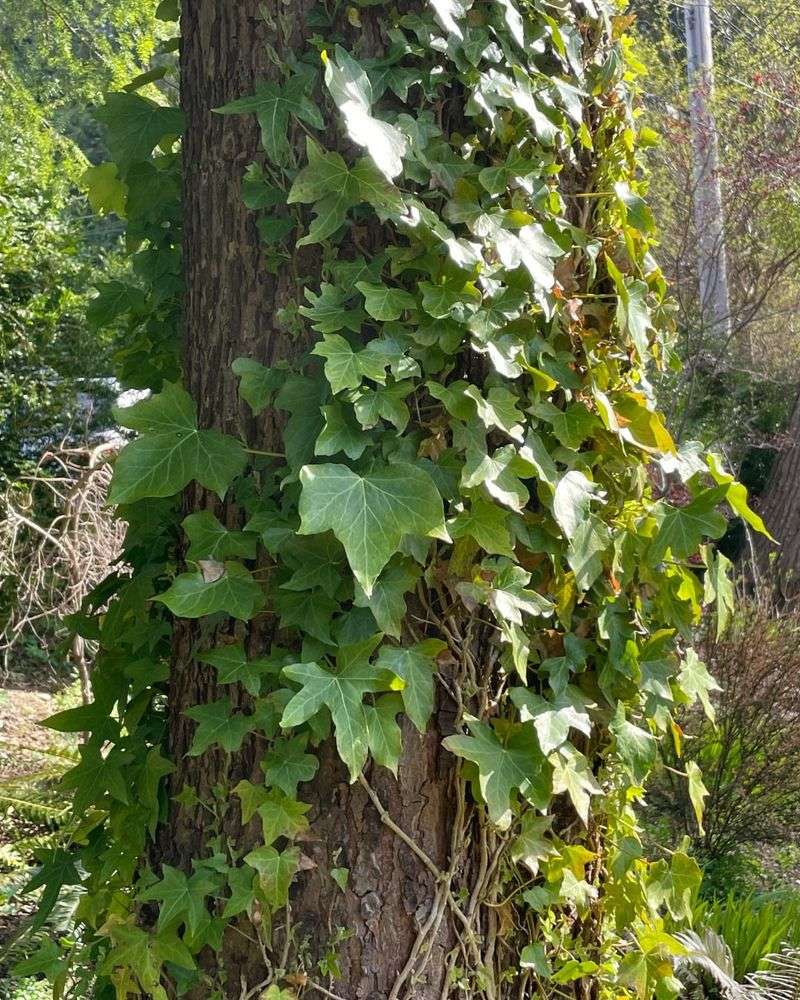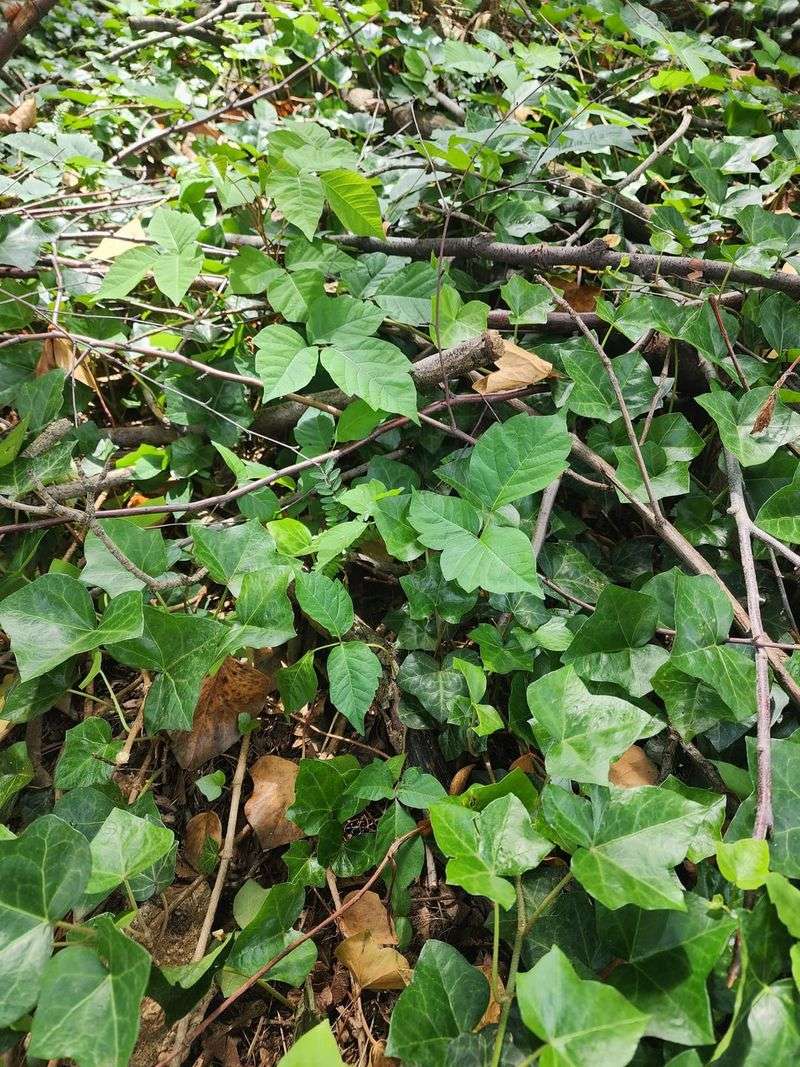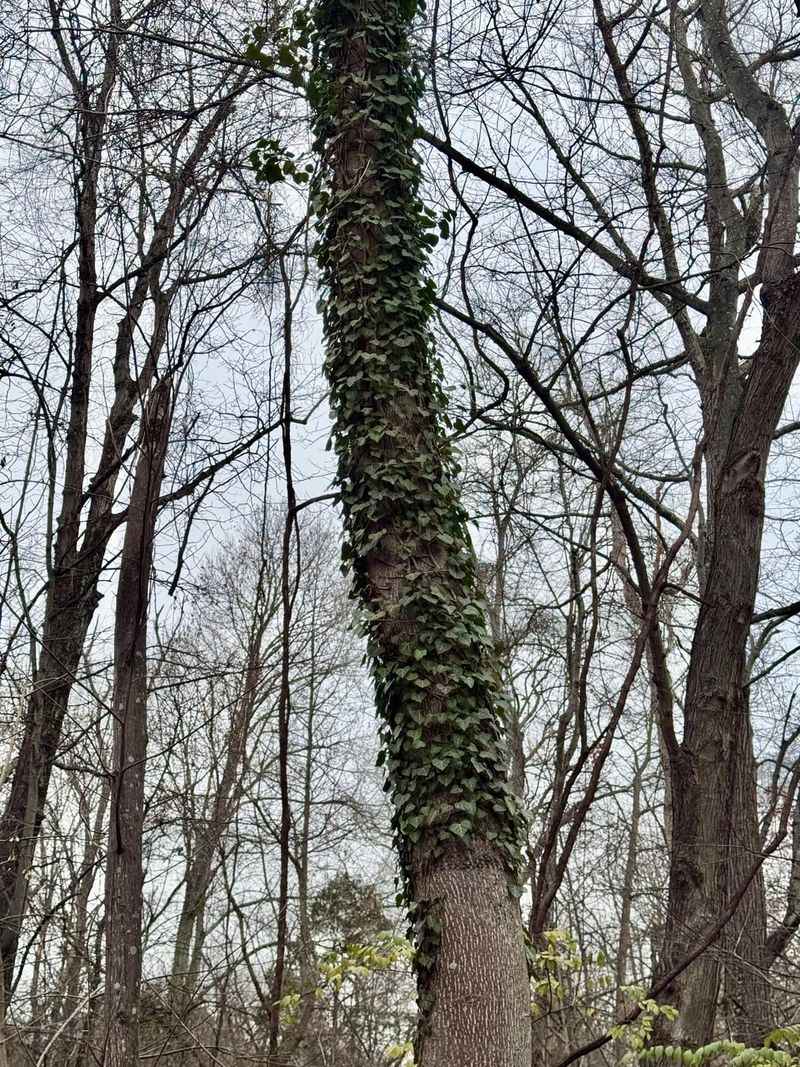Let me reveal the hidden danger lurking in California gardens—English Ivy. It looks harmless, even pretty, but it’s a perfect hideout for ticks.
Every time your pets wander through it, they risk picking up these tiny pests. Skipping this plant can keep your furry friends safe and your yard stress-free!
1. Dense Ground Cover Creates Perfect Tick Habitat
Thick layers of English ivy form dark, protected spaces where ticks love to hide and wait for hosts. The overlapping leaves block sunlight and trap moisture underneath, making an ideal environment for these parasites to thrive.
California’s mild climate combined with ivy’s dense growth means ticks can survive year-round in these cozy hideouts. When your pets walk through or sniff around ivy patches, ticks easily latch onto their fur.
Removing or trimming back ivy near areas where pets play significantly reduces tick exposure risks.
2. Ivy Retains Moisture That Ticks Need to Survive
Ticks require humid conditions to stay alive, and English ivy acts like a natural moisture trap. The plant’s thick foliage prevents water from evaporating quickly, keeping the area beneath constantly damp.
Even during California’s dry summers, ivy-covered spots maintain higher humidity levels than surrounding areas. This moisture allows tick populations to flourish when they would otherwise struggle in drier conditions.
Pet owners should check animals thoroughly after they’ve been near ivy, especially in shaded, moist garden sections where ticks congregate.
3. Wildlife Carriers Bring Ticks Into Ivy Patches
Squirrels, raccoons, and rodents frequently travel through ivy-covered areas, dropping off ticks as they pass. These wild animals serve as transportation systems for ticks, spreading them throughout your California property.
English ivy provides shelter and food sources that attract wildlife, creating a constant cycle of tick introduction. Once ticks drop into the ivy, they wait patiently for the next warm-blooded host—often your unsuspecting pet.
Limiting ivy growth near pet areas helps break this dangerous cycle of tick transfer from wildlife to pets.
4. Ivy’s Evergreen Nature Means Year-Round Tick Activity
Unlike plants that die back in winter, English ivy stays lush and green all year in California’s temperate climate. This constant coverage means ticks never lose their protective habitat, remaining active even during cooler months.
Most people assume ticks disappear in winter, but ivy-sheltered ticks can bite pets any time of year. California’s mild winters allow these parasites to continue their life cycles without interruption.
Consistent tick prevention for pets becomes essential when ivy grows on your property, regardless of season.
5. Low-Hanging Ivy Brushes Against Pets at Perfect Height
English ivy typically grows at the exact height where dogs and cats naturally brush against vegetation while exploring. Ticks position themselves on leaf tips, ready to grab onto any passing animal.
When pets investigate interesting smells near ivy-covered fences or walls in California gardens, their faces and legs contact the leaves directly. This direct contact gives ticks easy access to attach to your pet’s skin or fur.
Creating tick-free zones by removing ivy from pet pathways dramatically decreases the chances of your animals picking up these dangerous parasites.
6. Ivy Blocks Visibility Making Tick Checks Difficult
The thick tangle of English ivy vines makes it nearly impossible to spot ticks lurking beneath the canopy. Pet owners can’t easily inspect or treat these hidden areas where tick populations build up unnoticed.
California gardeners often discover severe tick infestations only after pets become ill from repeated bites. By then, thousands of ticks may be living in the ivy, posing ongoing health risks.
Regular inspection of pets after outdoor time and professional pest control in ivy areas help manage this hidden danger effectively.
7. Ivy Spreads Rapidly Expanding Tick Territory
English ivy grows aggressively throughout California, quickly taking over yards, trees, and structures. As the plant spreads, it carries tick populations into new areas where your pets play and relax.
What starts as a small decorative patch can become a sprawling tick haven within just a few seasons. The more ivy you have, the larger the tick-infested zones become on your property.
Controlling ivy growth through regular trimming or removal protects expanding areas of your yard, keeping tick populations contained and your pets safer from exposure.








